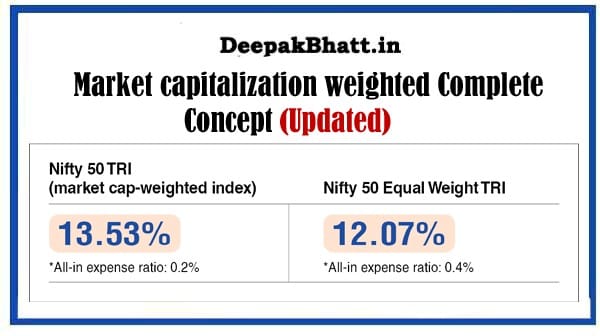What is Leverage: refers to the use of borrowed capital to increase the potential return of an investment.
It involves utilizing borrowed funds, such as loans or margin, to amplify the size of a position beyond what would be possible with the investor’s own capital alone.
Basics of Personal Finance: Getting Started
A Personal Finance Guide Tutorials
Learn Personal Finance 101 Free Video Course
- 1 What is Leverage?
- 1.1 Mechanisms of Leverage
- 1.2 1. Margin Trading:
- 1.3 2. Derivatives:
- 1.4 Types of Leverage
- 1.5 1. Financial Leverage:
- 1.6 2. Operating Leverage:
- 1.7 3. Degree of Operating Leverage (DOL):
- 1.8 4. Combined Leverage:
- 1.9 5. Capital Leverage:
- 1.10 The Risks of Leverage
- 1.11 1. Amplified Losses:
- 1.12 2. Margin Calls:
- 1.13 3. Interest Costs:
- 1.14 4. Market Volatility:
- 1.15 5. Liquidity Risks:
- 1.16 Real-World Applications of Leverage
- 1.17 1. Real Estate Investments:
- 1.18 2. Stock Market Trading:
- 1.19 3. Corporate Finance:
- 1.20 4. Derivatives Trading:
- 1.21 5. Private Equity and Venture Capital:
- 1.22 Responsible Use of Leverage
- 1.23 1. Risk Assessment:
- 1.24 2. Diversification:
- 1.25 3. Monitoring Market Conditions:
- 1.26 4. Setting Limits:
- 1.27 5. Understanding Financial Instruments:
- 1.28 Future Trends in Leverage
- 1.29 1. Technological Advancements:
- 1.30 2. Regulatory Changes:
- 1.31 3. Retail Investor Participation:
- 1.32 4. Integration of ESG Factors:
- 1.33 Conclusion
What is Leverage?
While leverage has the potential to enhance profits, it also introduces an element of risk, as losses can be magnified in the same proportion.
Mechanisms of Leverage
Understanding how leverage works requires a grasp of the mechanisms through which borrowed capital is employed to boost investment exposure. The two primary mechanisms of leverage are:
1. Margin Trading:
Margin trading involves borrowing funds from a broker to purchase securities. Investors can buy more shares than their cash balance would allow, effectively increasing the size of their position.
However, this comes with the requirement to maintain a minimum margin, and losses can lead to margin calls.
2. Derivatives:
Derivatives, such as options and futures contracts, provide a form of financial leverage. These instruments allow investors to control a larger position with a smaller amount of capital.
Derivatives derive their value from an underlying asset, and changes in the asset’s price can result in substantial gains or losses.
Types of Leverage
Leverage comes in various forms, each catering to different investment strategies and preferences. Some common types of leverage include:
1. Financial Leverage:
Financial leverage refers to the use of debt to finance investments. It involves borrowing capital to increase the size of an investment position.
Companies often use financial leverage to fund expansion or undertake projects that have the potential to generate returns exceeding the cost of borrowing.
2. Operating Leverage:
Operating leverage relates to the fixed costs inherent in a business’s operations. A company with high fixed costs and low variable costs has higher operating leverage.
While this can lead to higher profits in favorable conditions, it also increases the impact of losses during downturns.
3. Degree of Operating Leverage (DOL):
DOL measures the sensitivity of a company’s operating income to changes in revenue.
A higher degree of operating leverage means that a small change in sales can result in a proportionately larger change in operating income.
4. Combined Leverage:
Combined leverage considers both financial leverage and operating leverage. It assesses the impact of changes in sales on a company’s earnings per share (EPS) when accounting for both fixed financial costs and fixed operating costs.
5. Capital Leverage:
Capital leverage involves using various financial instruments and strategies to increase the potential return on equity. This can include options trading, margin accounts, and other forms of financial engineering.
The Risks of Leverage
While leverage has the potential to enhance returns, it also exposes investors to heightened risks. Understanding and managing these risks are crucial elements of prudent financial decision-making:
1. Amplified Losses:
The most significant risk of leverage is the potential for amplified losses. When the market moves against the leveraged position, the losses incurred are proportionately larger. This can lead to rapid and substantial erosion of capital.
2. Margin Calls:
Margin trading involves maintaining a minimum balance in the margin account. If the value of the leveraged position falls below a certain threshold, the investor may receive a margin call, requiring additional funds to be deposited to cover potential losses.
3. Interest Costs:
Borrowing capital incurs interest costs. While leverage can amplify returns, it also comes with the burden of interest payments. In periods of rising interest rates, these costs can escalate, affecting the overall profitability of the investment.
4. Market Volatility:
Leverage is particularly sensitive to market volatility. Sudden and significant price movements can trigger margin calls and result in rapid and unexpected losses. Investors using leverage must be prepared for market fluctuations.
5. Liquidity Risks:
Leveraged positions may face liquidity challenges, especially in less liquid markets or during periods of market stress. Exiting a leveraged position may be difficult, and the lack of liquidity can exacerbate losses.
Real-World Applications of Leverage
1. Real Estate Investments:
Real estate investors often use financial leverage to acquire properties. By obtaining a mortgage, an investor can control a more substantial property with a relatively smaller amount of equity. The rental income generated contributes to covering the mortgage costs.
2. Stock Market Trading:
Margin accounts allow stock market traders to leverage their positions. By borrowing funds from a broker, traders can buy more shares than their cash balance would allow. This amplifies both potential gains and losses in the stock market.
3. Corporate Finance:
Companies use financial leverage to fund projects and expansion. Issuing bonds or taking out loans allows businesses to access capital for growth, with the expectation that the returns on the investment will exceed the cost of borrowing.
4. Derivatives Trading:
Investors and traders use derivatives, such as options and futures contracts, to gain leveraged exposure to various asset classes, including stocks, commodities, and currencies. Derivatives amplify both profits and losses based on the price movements of the underlying assets.
5. Private Equity and Venture Capital:
Private equity and venture capital firms often employ leverage to enhance returns. Leveraged buyouts, where a significant portion of the acquisition is financed with debt, are common in the private equity sector.
Responsible Use of Leverage
While leverage carries inherent risks, it can be used responsibly as part of a well-thought-out investment strategy. Some principles for the responsible use of leverage include:
1. Risk Assessment:
Before employing leverage, investors should conduct a thorough risk assessment. Understanding the potential risks and rewards of the leveraged position is essential for informed decision-making.
2. Diversification:
Diversifying a portfolio can help mitigate the risks associated with individual leveraged positions. Spreading investments across different asset classes and strategies can reduce the impact of losses in any single position.
3. Monitoring Market Conditions:
Market conditions can influence the effectiveness of leverage. Investors should stay vigilant, monitoring economic indicators, geopolitical events, and changes in interest rates that may impact the performance of leveraged positions.
4. Setting Limits:
Establishing clear risk limits and setting predefined exit points can help investors manage the potential downsides of leverage. This includes determining the maximum acceptable level of loss and taking appropriate action if that level is reached.
5. Understanding Financial Instruments:
Investors should have a solid understanding of the financial instruments used for leverage, whether it’s margin accounts, options, or futures contracts. Knowledge of the mechanics of these instruments is crucial for effective risk management.
Future Trends in Leverage
As financial markets continue to evolve, several trends are shaping the future landscape of leverage:
1. Technological Advancements:
Technology, including algorithmic trading and artificial intelligence, is influencing how leverage is employed in financial markets. Automated trading systems can execute leveraged strategies with speed and precision.
2. Regulatory Changes:
Regulatory bodies may implement changes to the rules governing leverage, particularly in response to market events or to address systemic risks.
Investors should stay informed about any regulatory developments that may impact their use of leverage.
3. Retail Investor Participation:
The rise of online trading platforms has facilitated greater access to leverage for retail investors.
The increased participation of individual investors in leveraged trading may impact market dynamics and risk profiles.
4. Integration of ESG Factors:
Environmental, social, and governance (ESG) considerations are becoming increasingly important in financial markets.
The integration of ESG factors into investment decisions may influence how leverage is employed, with a focus on sustainable and responsible practices.
Conclusion
In conclusion, leverage stands as a formidable force in the financial landscape—a tool that can multiply both the rewards and the risks of investment decisions.
As investors navigate the complexities of leveraging, a balanced and informed approach is crucial.
Understanding the mechanisms, types, risks, and real-world applications of leverage empowers investors to make prudent decisions that align with their financial goals.

















